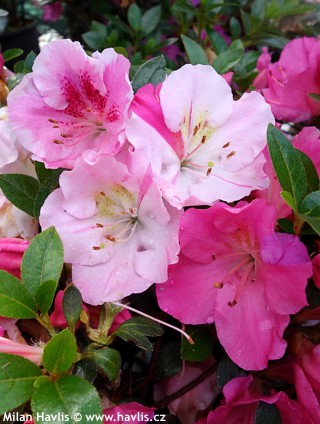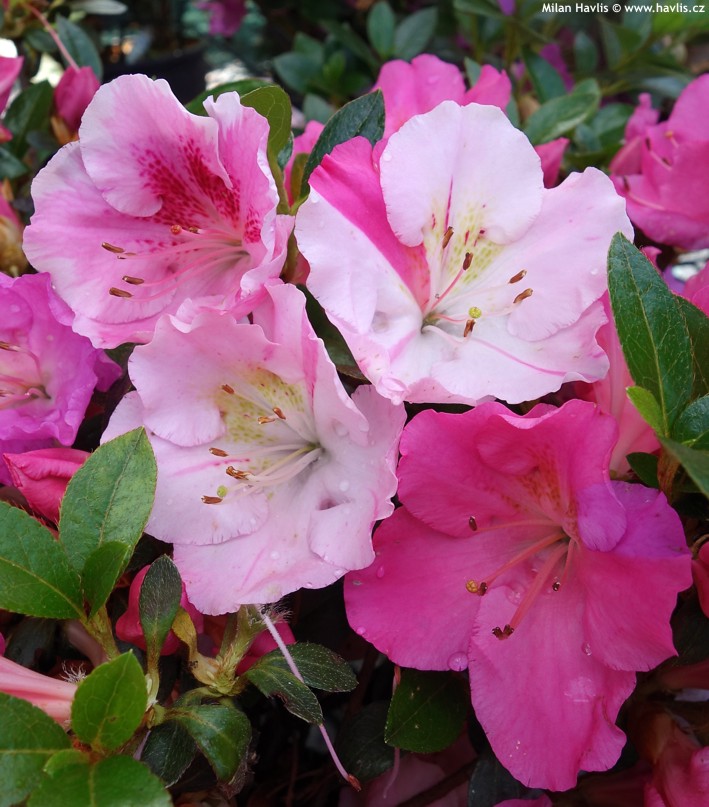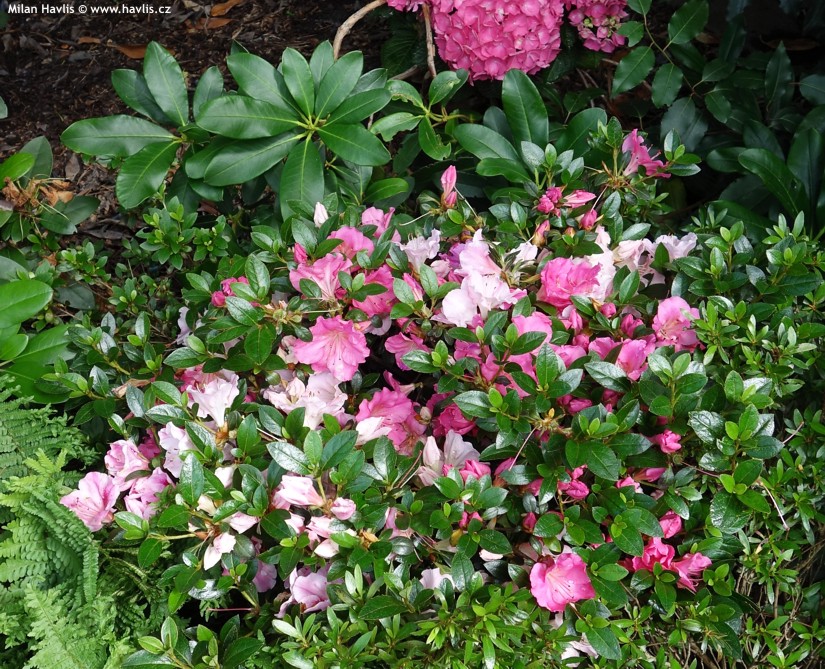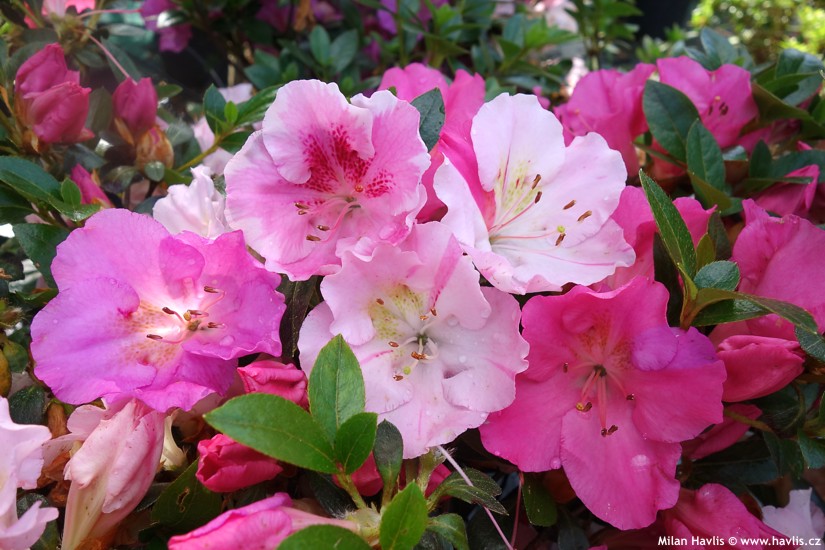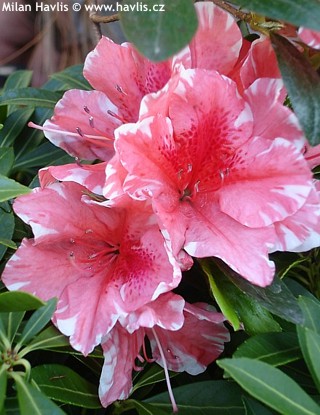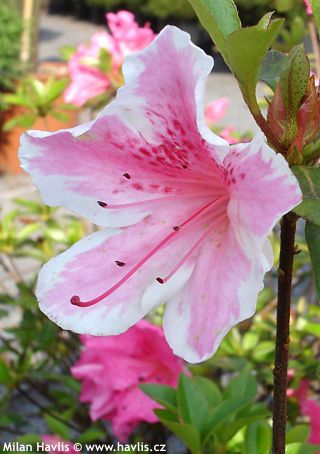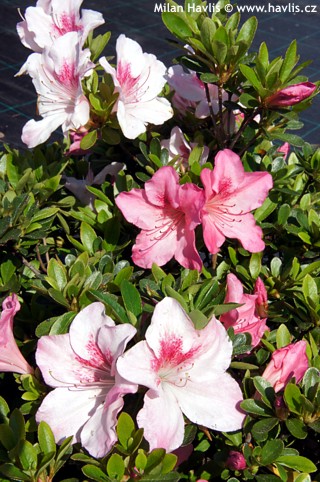Azalea x 'HARU-NO-SONO' hybrid Japanese azalea
Azalea
Among Japanese azaleas there are groups that originated as natural hybrids or were hybridized by botanists. Satsuki is a name for one group of hybrid azaleas that are crosses of rhododendron indicum and rhododendron tamurae or rhododendron eriocarpum.
Haru-no-sono is a hybrid Satsuki azalea, a sport of
, a beautiful, large-flowered chameleon. The flowers are a combination of white and various portions of pink and purple. Even the dots in the throat vary from yellow green to purple red. You never know how many pink, white, and pinky-white flowers you get year to year, isn't that thrilling? Blooming time is later than Japanese azaleas: end May till end June, and in Czech climate we often see its last flowers yet in early July. It is slow and dense growing, making a superb cushion or almost a ground cover with evergreen, elliptic and glossy, mid green leaves.
Satsuki azaleas are quite compact and bushy growing but can be clipped to shapes in early July after flowering. If so, do not use fertilizers enhancing growth rate. The size of new branches would get out hand and spoil the shape you are going to achieve. They need light, permeable soil that is acid, constantly moist (keep azaleas mulched at all times) and moderately fertile. Use fertilizers for rhododendrons and azaleas, or ericaceous plants. The best soil mix is 1/3 of peat, 1/3 of leaf-mould or lime-free compost, and 1/3 of soil from the hole where you are going to plant it. Azaleas have shallow roots, so never plant them too deep. If leaves turn yellow or fall down after winter it is planted in wet or heavy soil. So far we have experienced its hardiness down to -21°C (USDA zone 6b), preferably located in winter shade or if grown in full sun they will do better with fir branches or white woven in case of heavy frost and sunny strong sunlight.
Last update 17-06-2018

































